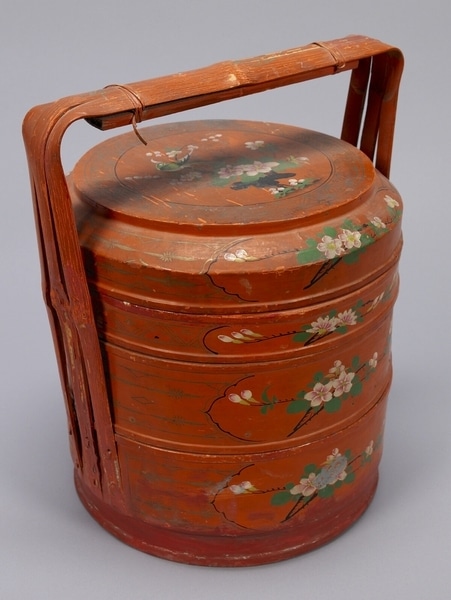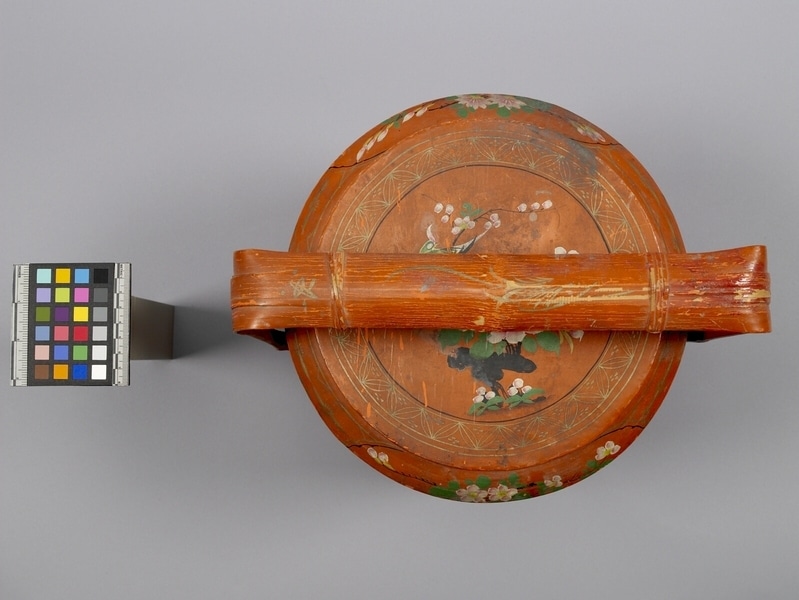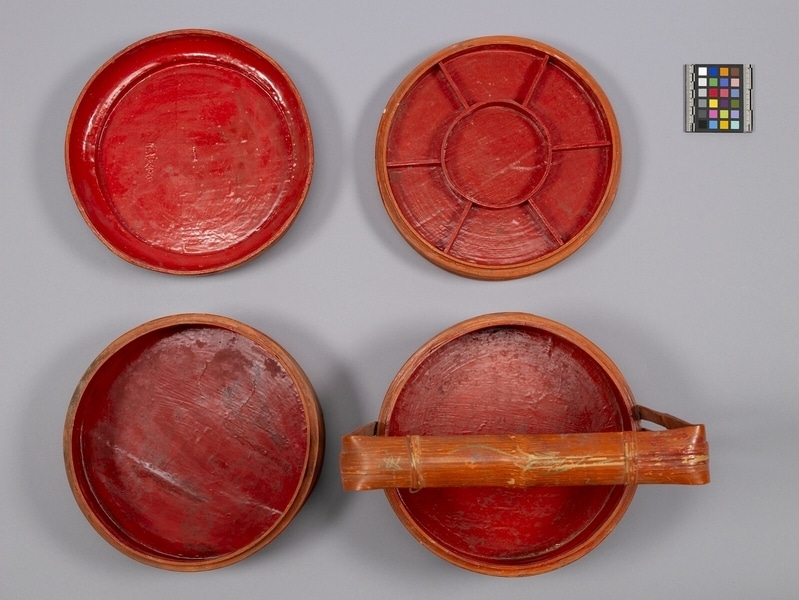Container Item Number: Edz1057 a-d from the MOA: University of British Columbia




Description
Wooden container with a bamboo handle (a), two trays and a lid (b-d). The outside is painted red-orange with gold trim and with panels of flowers in pink, white, green and yellow-green. The base (a) sits on a raised ring with bamboo handle; deep tray (b); shallow tray (c) with six compartments; and a lid (d) with a raised outer panel with flower and bird designs.
History Of Use
Such containers were seen being used by Hoklo worshippers taking offerings to the Tien Hou temple on Tsing Yi Island, Tsuen Wan District, during the annual festival there. They were also used by the woman whose role it was to accompany a bride to her new home, carrying gifts of sweets to the bride’s new mother in law and father in law, and by callers making New Year visits to carry gifts of sweets. It is almost certain that such containers are no longer in use.
Iconographic Meaning
The colours orange and red are auspicious and protective.
Cultural Context
worship; marriage; social relations
Narrative
This container was collected in Macao, but may not be specific to that place. Hoklo people were boat-dwelling fishing people who spoke a dialect of Chinese different from that of the other boat dwelling fishers. The former lived on large boats and the women wore elaborately decorated clothing, whereas the Cantonese-speaking boat people (often known by the derogatory term Tanka) generally lived on smaller boats and the women dressed more simply. Hakka people are land-dwellers who began arriving in the New Territories of Hong Kong in the 18th century. The versions of Chinese spoken by the above groups are not mutually intelligible, although they read the same written language.
Item History
- Made in Tsuen Wan, Hong Kong, China
- Collected by Elizabeth L. Johnson during 1979
- Owned by Elizabeth L. Johnson before March 17, 1980
- Received from Elizabeth L. Johnson (Seller) and Museum of Anthropology Shop Volunteers (Funding source) on March 17, 1980
What
Who
- Culture
- Chinese: Hakka
- Field Collector
- Elizabeth L. Johnson
- Previous Owner
- Elizabeth L. Johnson
- Received from
- Elizabeth L. Johnson (Seller) and Museum of Anthropology Shop Volunteers (Funding source)
Where
- Holding Institution
- MOA: University of British Columbia
- Made in
- Tsuen Wan, Hong Kong, China
When
- Collection Date
- during 1979
- Ownership Date
- before March 17, 1980
- Acquisition Date
- on March 17, 1980
Other
- Condition
- fair
- Accession Number
- 0610/0027